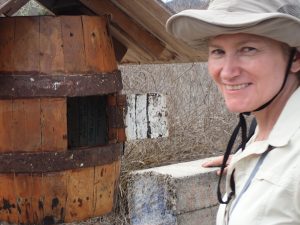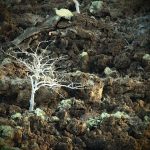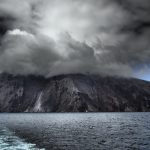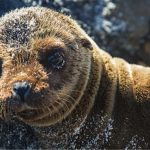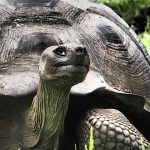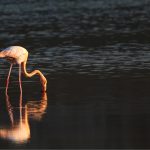A surprising Equatorial Adventure.
Dr. Rowena Sheppard - Goondiwindi
There is no bump in the road or encircling red line. It is not abundantly clear that the toilet flushes differently on either side. One hardly knows they have “crossed over”.
I imagined that visiting equatorial zones meant I would head into a lush forested jungle teaming with botanic curios, and screeching wildlife, get drenched by voluptuous raindrops, and then bitten by insects carrying exotic diseases, and suffer tropical storms and wild seas.
But the Galapagos are different. A balmy 20-30 degrees in November, the cool waters (from the Antarctic Humboldt current) require a wetsuit for insulation. The parched lava-laden islands contrast the skeletal frames of deciduous “Incense Trees” devoid of all foliage, waiting for the wet season. It seems more of a moonscape than a jungle, albeit fringed with an abundant bizarre wildlife evocative of a Jurassic era, all dependant on the richness of the food sources from the seas, rather than from the land.
With rainfall of just 3 inches a year and no storms or cyclones to speak of, the calm waters straddling “the doldrums” give rise to the unexpected extra-ordinariness of the life forms therein. The assault to conventional reasoning which life on these islands provoke gives some insight into the inspiration for Charles Darwin to develop his revolutionary, evolutionary theories. Though the Beagle was only in the Galapagos for 5 weeks out of a 5 year voyage, these islands left their impression, and changed scientific thinking forever.
Every Island tells its own story, each with a feminine name, for example - Floreana, Isabella and Fernandina and each with its’ own subspecies of wildlife. Volcanic in origin, the islands are slowly rising in the West and sinking in the East over recent millennia. The Galapagos are geologically “new” but in isolation have developed uniquely.
Nowhere else in the world can one see penguins beside flamingos, iguanas, crabs, and sea turtles standing on recently cooled larval flows or in mangrove swamps. Nowhere else can you “post a letter” in a wine barrel, and wait for another sailor going in the direction of home to pick it up and deliver it – Though over 200 years old, this is a more reliable system than Ecuadorian official mail services – and no stamp required!
Dragon-like iguanas sneeze a salty mucus (rather than flames) from their nostrils to expel saline from their bodies on islands where there is no fresh water. Giant tortoises with their “ET” faces weighing over 150kg inhabit the highlands of Islands with freshwater sources, though have been known to survive up to one year without food or water. Their plundered numbers are actively being rehabilitated, as their unique ability to survive and ease in catching them, made them perfect “fresh meat” supplies for hungry sailors caught in the middle of the Pacific. I now understand true tortoise pace – the fascinating “hydraulics” of a tortoise raising its shell to move smoothly and ever so slowly – as close to suspended animation as any life form gets.
Go if you can.. but exotica comes at the price of long haul travel and the necessity to avoid the human hazards such as “taxi-napping” of tourists in Ecuador. (They hand out brochures on how to identify an authentic taxi when passing through immigration). Take your sunscreen, insect repellant and water purification tablets, and be careful of the Ceviche – a ubiquitous seafood dish based on seafood “cured” in lemon or lime juice, but not actually cooked and therefore capable of causing food poisoning and transmitting parasites. Food preparation and fresh sourcing is paramount for this to be safe. If any doubt don’t eat it, and pregnant women should avoid it completely.
Dr. Rowena Sheppard
Goondiwindi, Queensland
